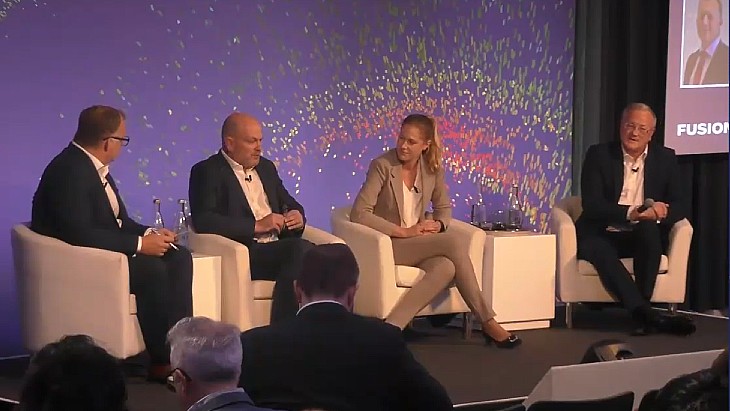At a session entitled How will fusion make the transition to an industry? at the event held in the Science Museum in London, there was talk of 10,000 or more fusion power plants being required in the future.
Ross Morgan, from Tokamak Energy, said that his company, and others, were designing and aiming to build prototype plants in the 2020s, with pilot plant demonstrations in the early 2030s and using that as a platform to deploy commerical fusion within that decade.
Asked when he thought the supply chain needed to develop to support fusion, he said: "I think from our perspective it needs to start now ... we want to to engage with partners and suppliers who are going to work with us through that journey and help deliver commercial fusion power plants in the future."
Heike Freund, chief operating officer of Marvel Fusion, cited Bloomberg's asessment of the fusion industry potentially being as big as USD40 trillion and also said that in her view the two dominating topics for the next decade would be artifical intelligence in software and fusion in hardware. "We need to build this industry but I'm convinced that people will want to go into this industry, especially the younger generation - people want to work on topics that have impact, they want to work on purposeful topics" such as fusion energy tackling climate change.
She added that the development of prototype fusion plants being developed now is "an amazing opportunity for suppliers ... if you are already involved in those prototype stages you have a good chance of also being the go-to partner for the later steps to come, so I think now is really the moment in time when companies should get engaged."
Greg Willetts, vice president for Technology & Cyber Solutions within Jacobs' Energy, Security and Technology business, said his company was committed to energy transition and said, with its project management, technical solutions and engineering experience, the aim was to help make the fusion industry real.
He said that as an industry there was the "opportunity to design a new industry and make it how we want to ... a golden opportunity to make it more diverse, more inclusive, more rooted in social value into the community, we can design that in by the way thiongs are procured".
The aim of the conference was to bring together the whole fusion sector to demonstrate the sector’s potential, and was organisated by the UK Atomic Energy Agency's Fusion Cluster and came alongside a number of announcements, including Canada’s General Fusion and the UKAEA agreeing to collaborate on projects to "advance the commercialisation of magnetised target fusion energy", including 'honing' General Fusion’s demonstration machine being built at Culham, near Oxford.
Earlier this month the UKAEA announced that its newly completed GBP10 million (USD11.4 million) extension has doubled the size of its Materials Research Facility (MRF) at Culham. Specialist materials that can withstand extreme conditions are a critical part of delivering fusion energy as a safe, sustainable, low-carbon energy supply, the UKAEA said. They are also essential in the development of STEP (Spherical Tokamak for Energy Production), the UK's prototype fusion power plant. The investment has seen an additional 12 shielded research rooms, used to hold high-end analytical instrumentation, added to the facility, as well as extensive new active chemical laboratory space, for scientists and engineers to develop more neutron-tolerant materials.
The UK also recently announced the selection of a site at West Burton in Nottinghamshire to host the STEP demonstration plant, which is due to begin operating by 2040. And last week the UKAEA and Tokamak Energy signed a five-year framework agreement for closer collaboration "on developing spherical tokamaks as a route to commercial fusion energy".






_18570.jpg)
_16159.jpg)
_49205.jpg)





